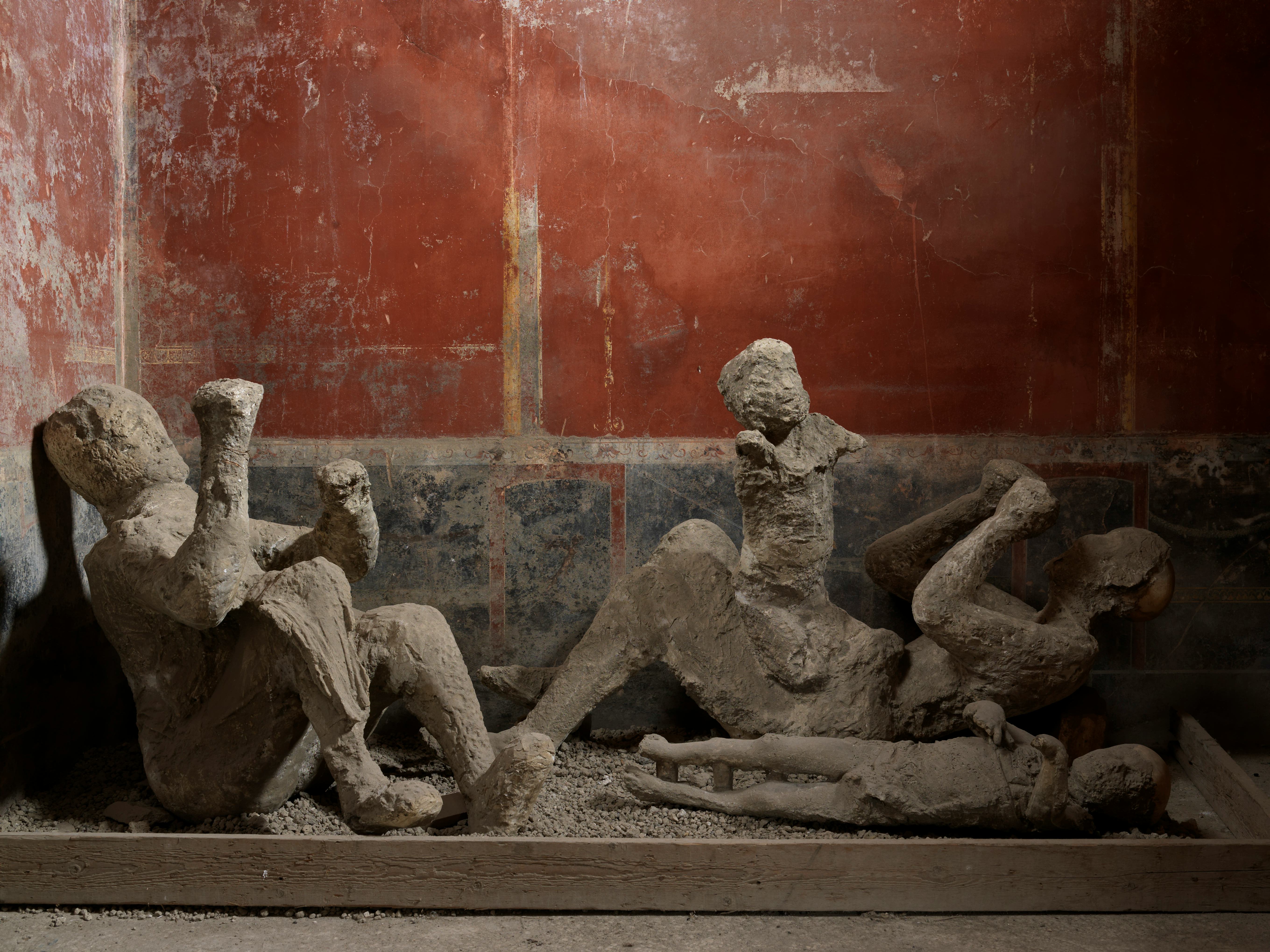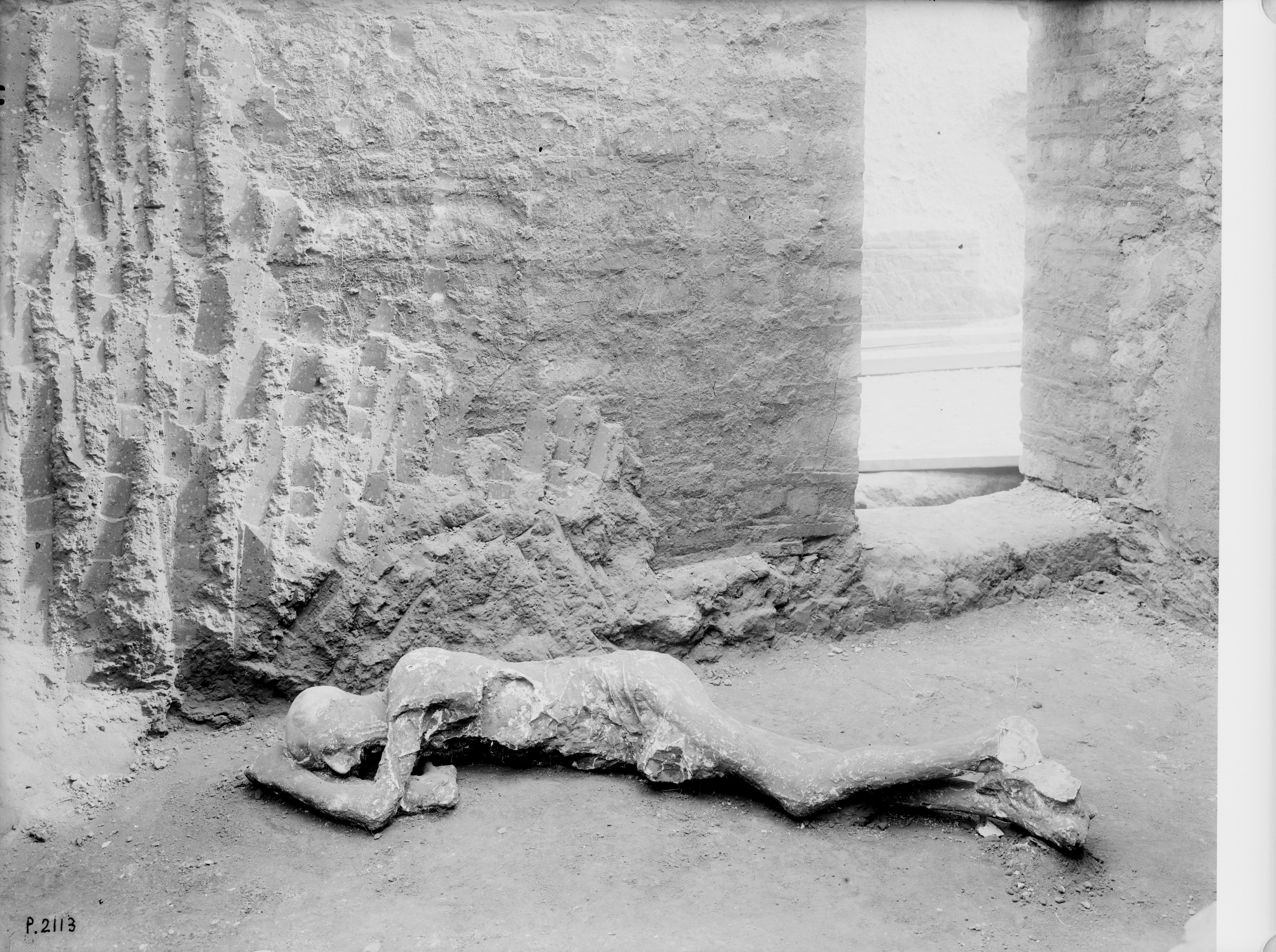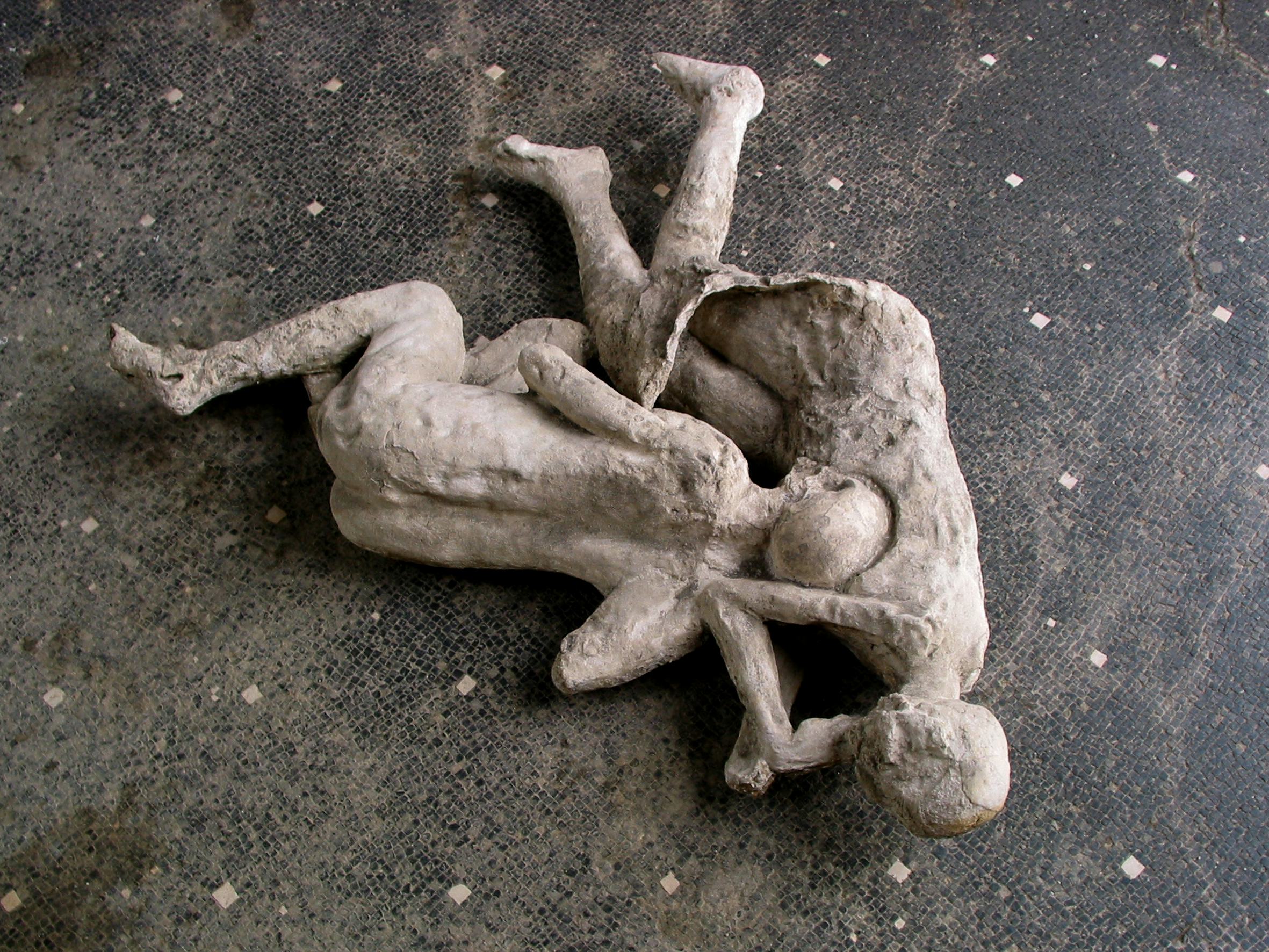
In the wake of the eruption of Mount Vesuvius in 79 CE, some two thousand people were smothered in ash, leaving behind still images of their final moments. Historians and archaeologists extrapolated stories and identities from these stills, describing a mother and child in an embrace or two sisters clutching each other. But a new genetic analysis shows how wrong we’ve been about some of these identities.
In a paper published today in the journal Current Biology, authors from the United States, Italy, and Germany describe what DNA evidence from 14 Pompeii victims tells us about their actual identity, from sex to ancestry. This study underscores that the narratives we derive from history aren’t necessarily true, and the science may reveal quite a different story.

“The scientific data we provide do not always align with common assumptions,” co-author David Reich, a geneticist at Harvard University, said in a press release. Notably, Reich described that one set of entombed victims includes an adult holding a child, typically viewed as a mother and child. However, the analysis revealed they were actually an unrelated adult male and child. Likewise, another pair has traditionally been thought of as sisters or a mother and daughter, but it turned out at least one individual was male.
The team extracted ancient DNA from the human casts, analyzing bone fragments as well as conducting radiocarbon dating in 4 individuals. In terms of ancestry, they found that 5 individuals descended from eastern Mediterranean, Levantine, and North African Jewish populations. Ancient genomes from individuals in Rome have also showed this lineage, which the authors interpret as a testament to the Roman Empire’s cosmopolitanism.

The individuals analyzed all came from archaeological sites with names like something from an Indiana Jones movie: The house of the golden bracelet held a person found wearing a heavy, intricate golden bracelet. The house of the cryptoporticus, named for its underground passageway with openings, contained 9 people, two of which the researchers analyzed. The villa of mysteries held 6 bodies, one of which the team determined to be a male of both Eastern Mediterranean and European ancestry.
Another debunked narrative had initially described four individuals, found in the house of the golden bracelet, as biological relatives. Mitochondrial DNA and whole genome analysis revealed that none of them were related.
In light of these findings, the team highlight that multidisciplinary approaches are necessary to truly understand the ancient past.







